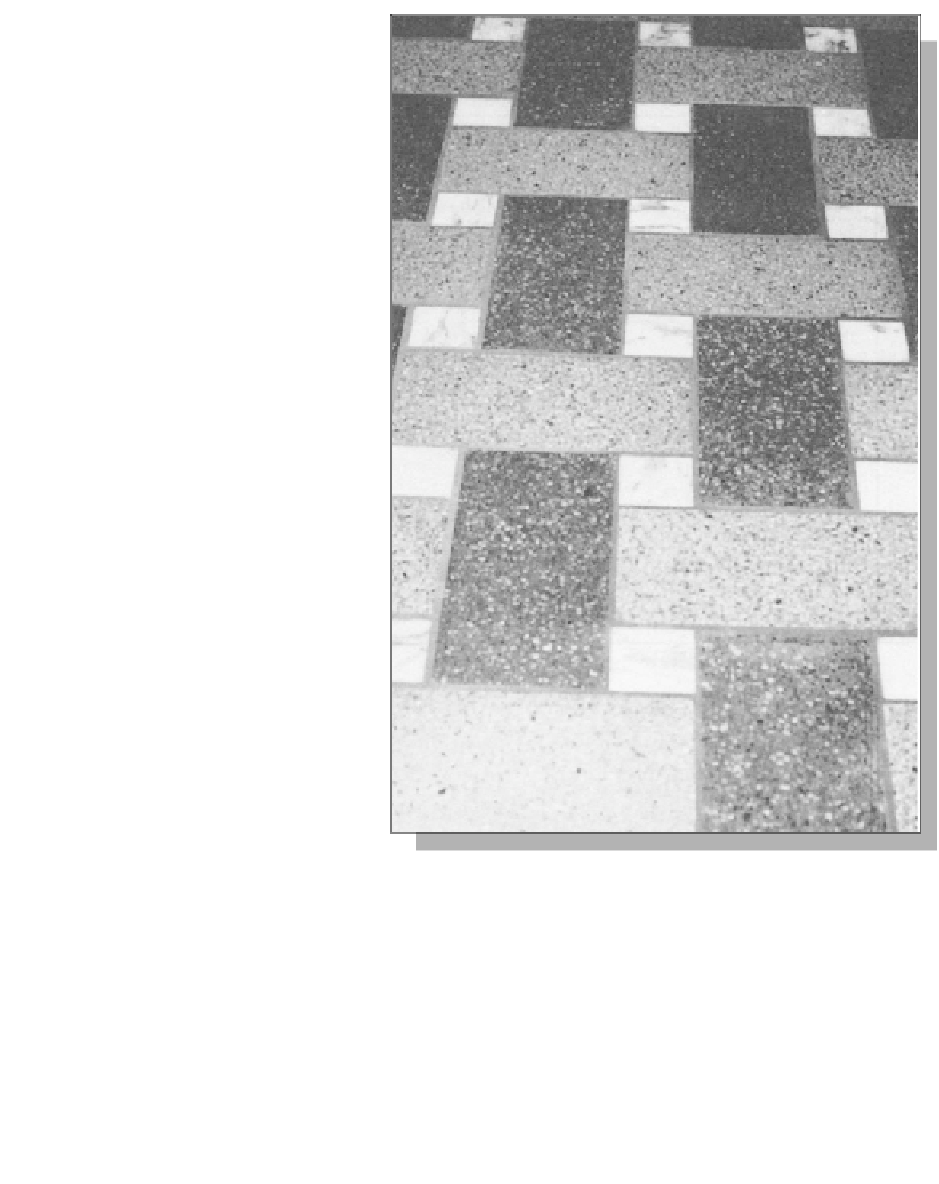Civil Engineering Reference
In-Depth Information
is cast in a 15-20 mm-thick layer on
a concrete structural slab, and the
surface is given a smooth finish by
machine.
There are many types of floor
tiles in terrazzo available on the
market. They are usually 30
30 cm or 40
40 cm with a thick-
ness of 4-6 cm. Pure concrete tiles
are also produced as a floor finish;
these are usually 30
30 cm square.
Concrete floors that have not
cured properly are known to cause
indoor climate problems. However,
when the concrete product is prop-
erly cured and treated against dust,
it is chemically stable and problem-
free. Steel reinforcement can
increase the electromagnetic field in
the building.
Concrete and terrazzo tiles can be
re-used if they are laid in a way that
makes them easily removable. They
can, for example, be laid in sand
and given a weak lime cement mor-
tar joint.
In situ
cast concrete floors
can at the most be recycled as low
quality aggregate or fill.
'Peatstone'
As a little curiosity, a floor tile made of
'peatstone' was in use at the turn of
the century. Dry, hacked peat and
sawdust were mixed with lime or
dolomite. This was then mixed with wood vinegar and compressed to make slabs which
were then dried. We know very little about the properties of 'peatstone' floors. It is perhaps
the right time to experiment with this sort of flooring - it is very attractive in terms of ener-
gy and the environment.
Figure 15.1: Floor of terrazzo slabs with marble tiles.
Sheeting
There are three main types of mineral-based sheeting: cement-based, calcium sil-
icate-based and gypsum-based. Apart from the binder, they often contain fibrous

